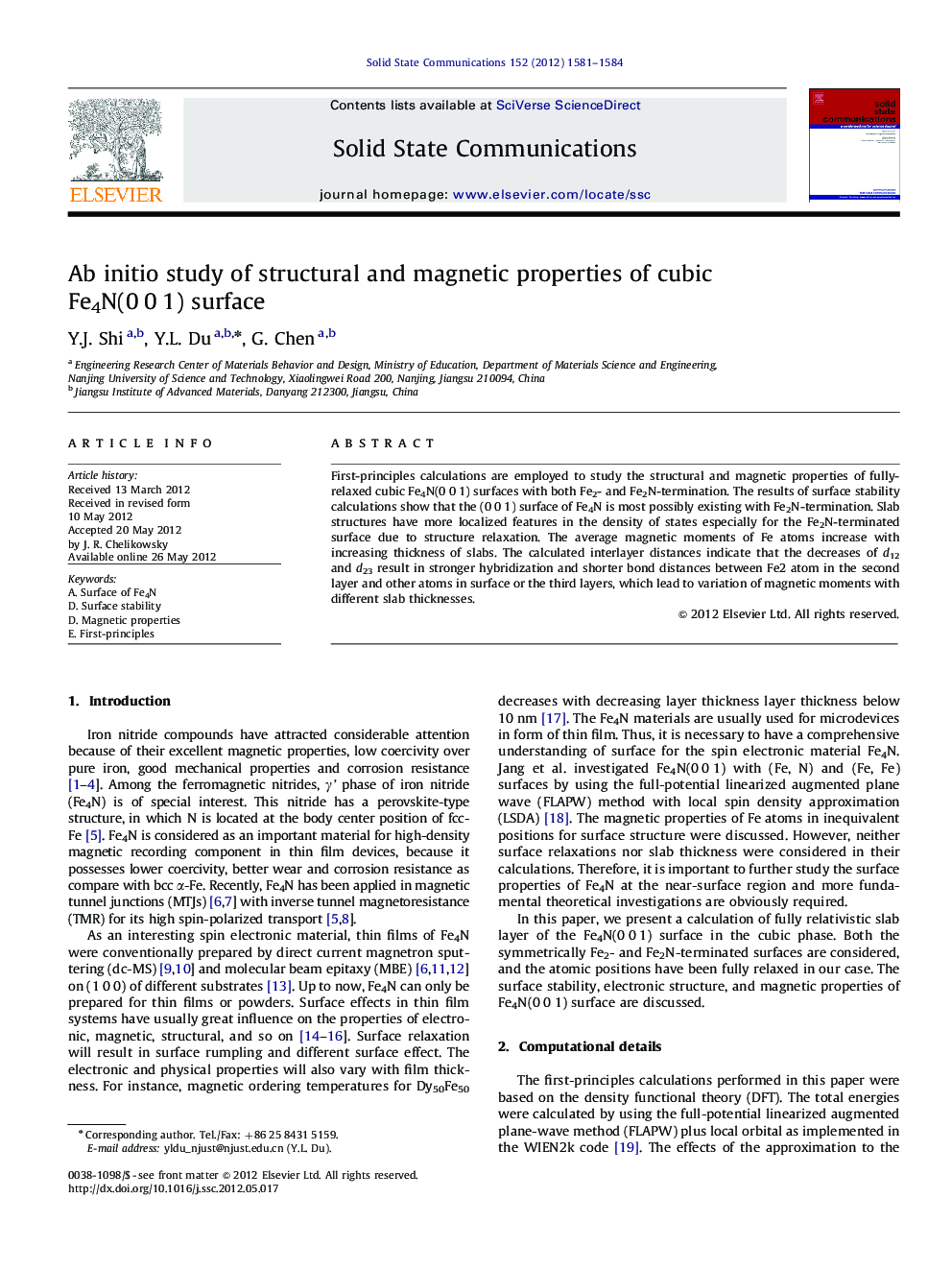| Article ID | Journal | Published Year | Pages | File Type |
|---|---|---|---|---|
| 1592654 | Solid State Communications | 2012 | 4 Pages |
First-principles calculations are employed to study the structural and magnetic properties of fully-relaxed cubic Fe4N(0 0 1) surfaces with both Fe2- and Fe2N-termination. The results of surface stability calculations show that the (0 0 1) surface of Fe4N is most possibly existing with Fe2N-termination. Slab structures have more localized features in the density of states especially for the Fe2N-terminated surface due to structure relaxation. The average magnetic moments of Fe atoms increase with increasing thickness of slabs. The calculated interlayer distances indicate that the decreases of d12 and d23 result in stronger hybridization and shorter bond distances between Fe2 atom in the second layer and other atoms in surface or the third layers, which lead to variation of magnetic moments with different slab thicknesses.
► First-principles calculations are employed to study the cubic Fe4N(0 0 1) surfaces. ► The (0 0 1) surface of Fe4N is most possibly existing with Fe2N-termination. ► Slab structures have more localized feature in DOS due to structure relaxation. ► Average magnetic moments of Fe atoms become larger with increasing thickness of slabs.
